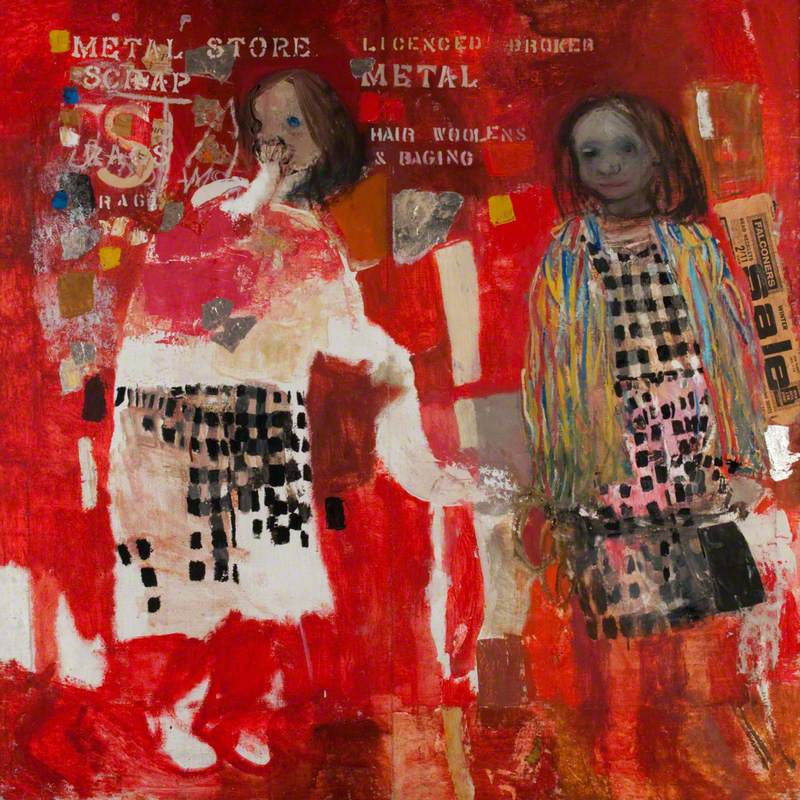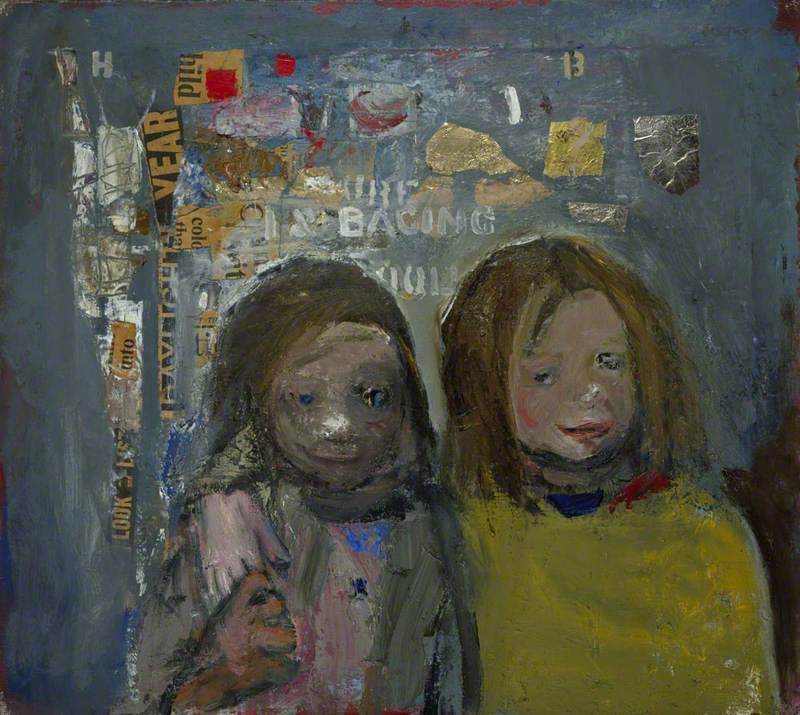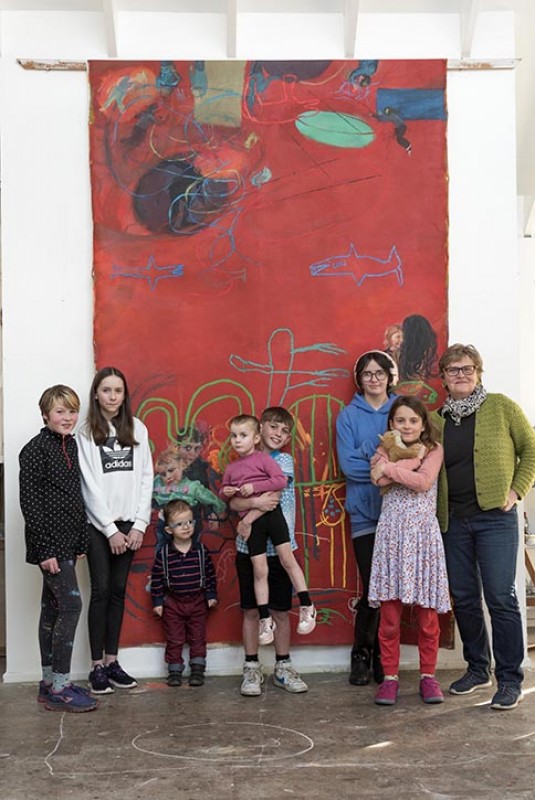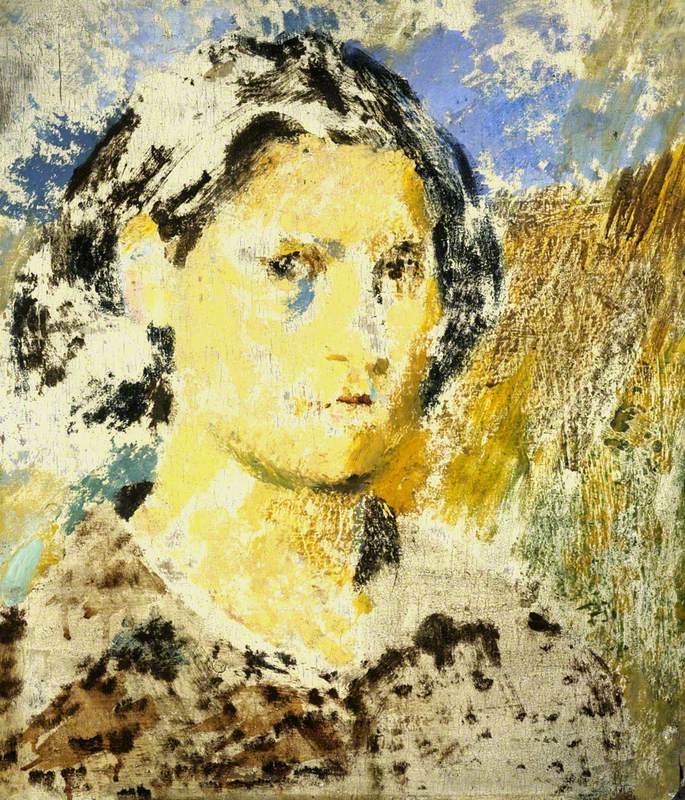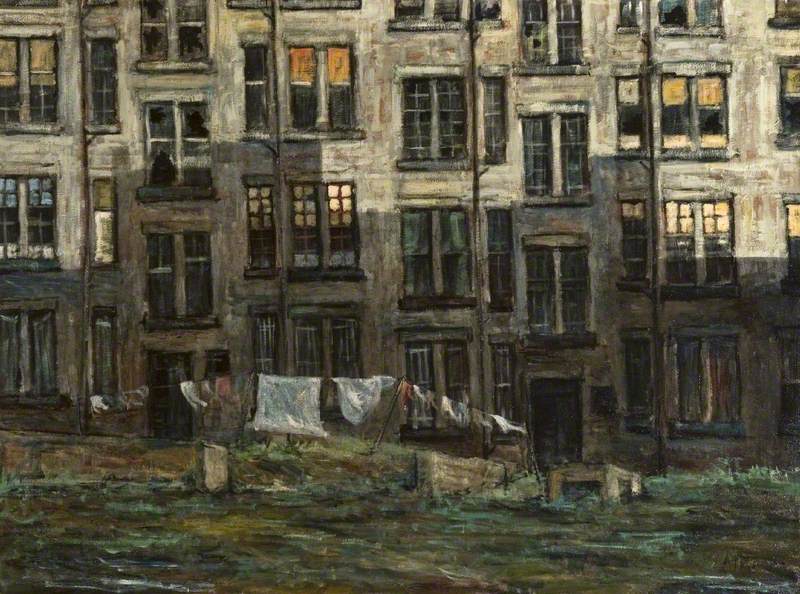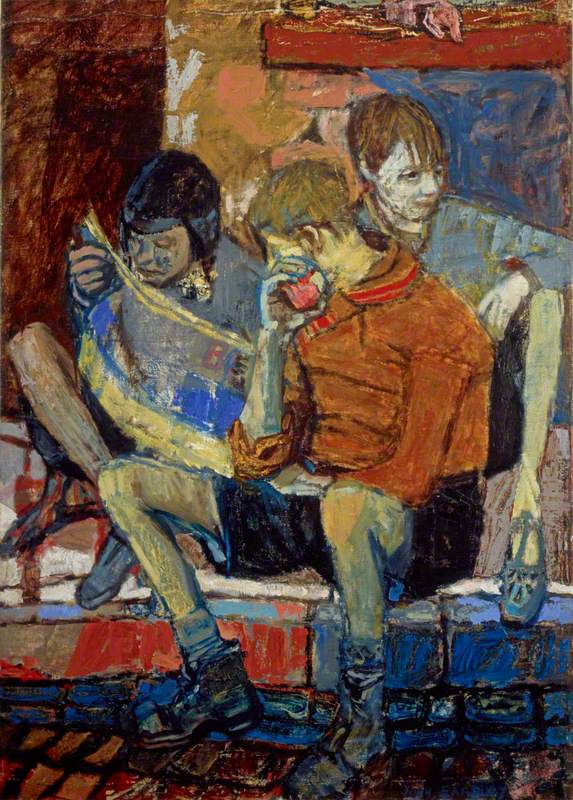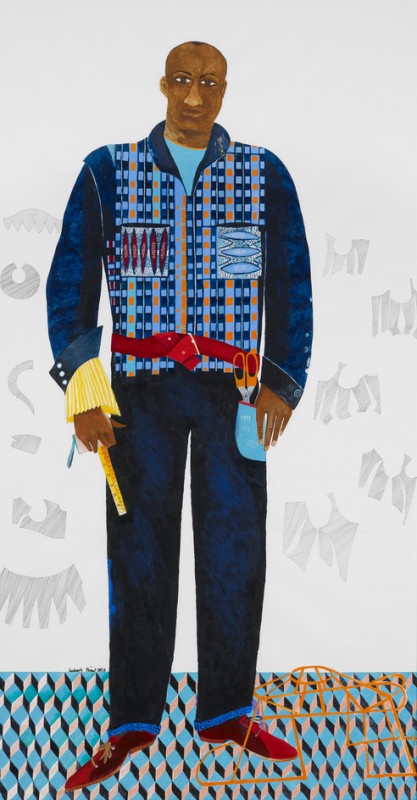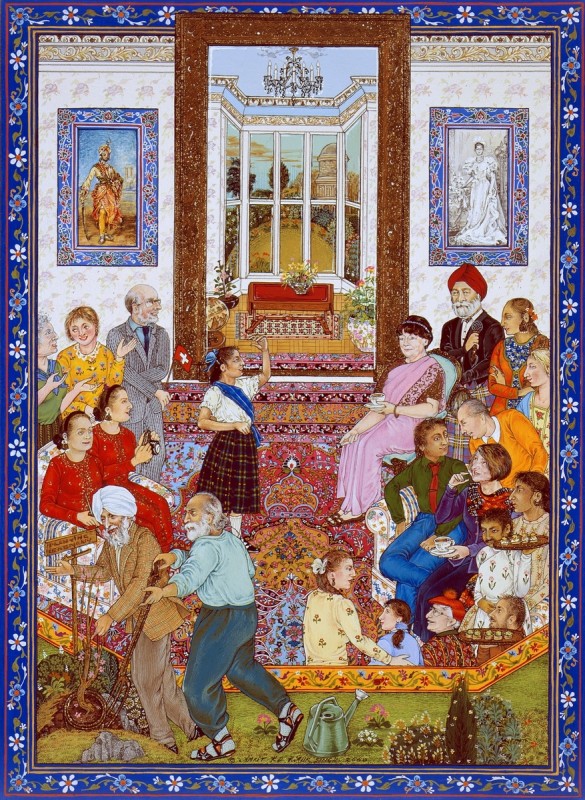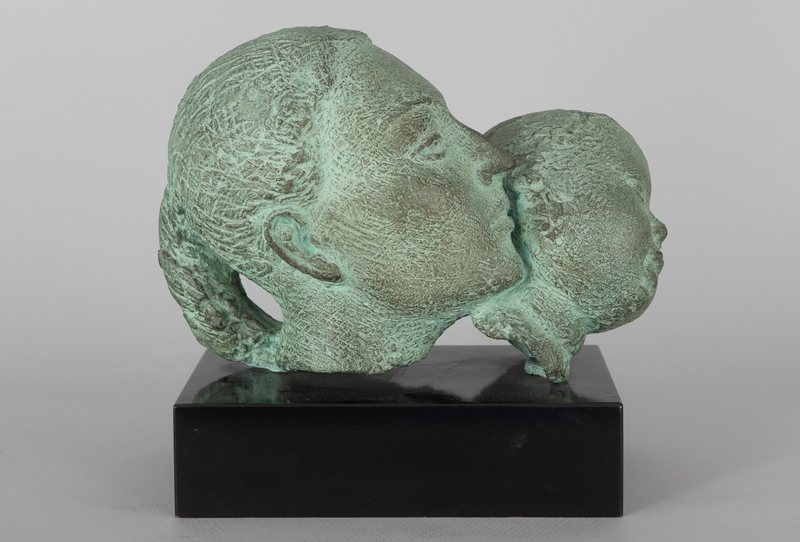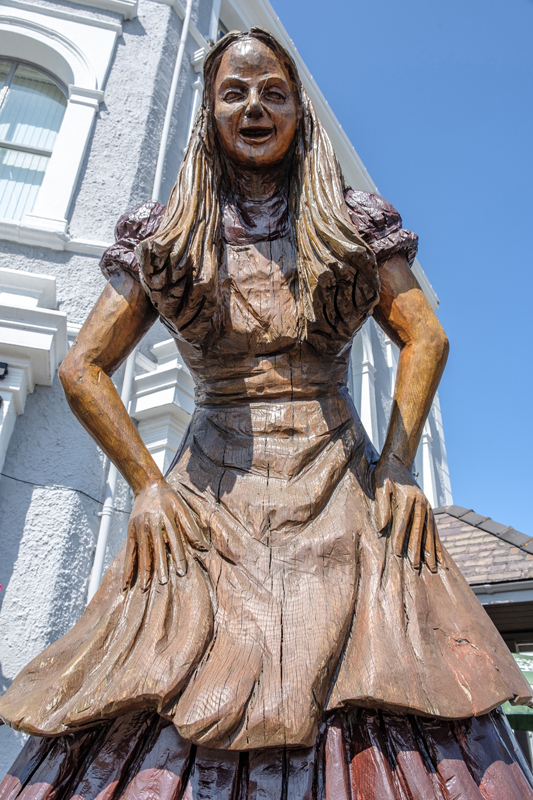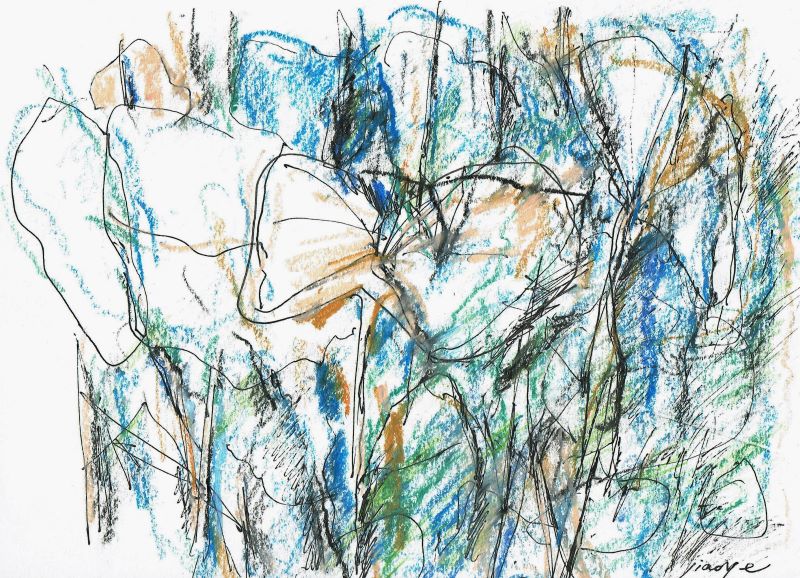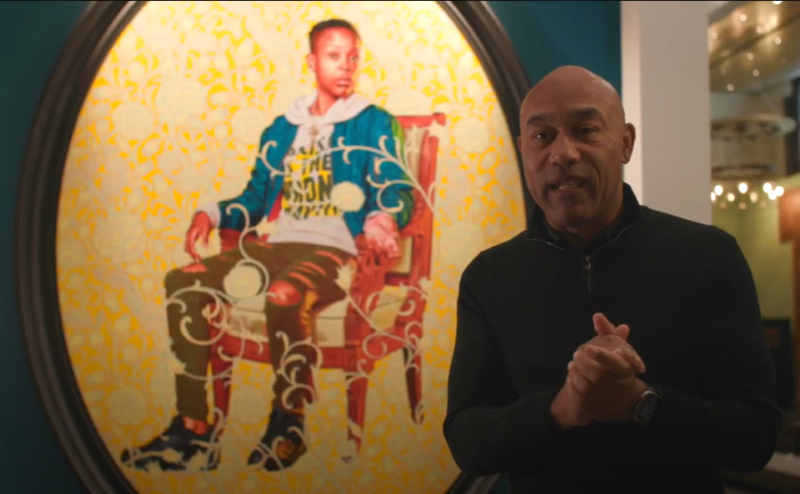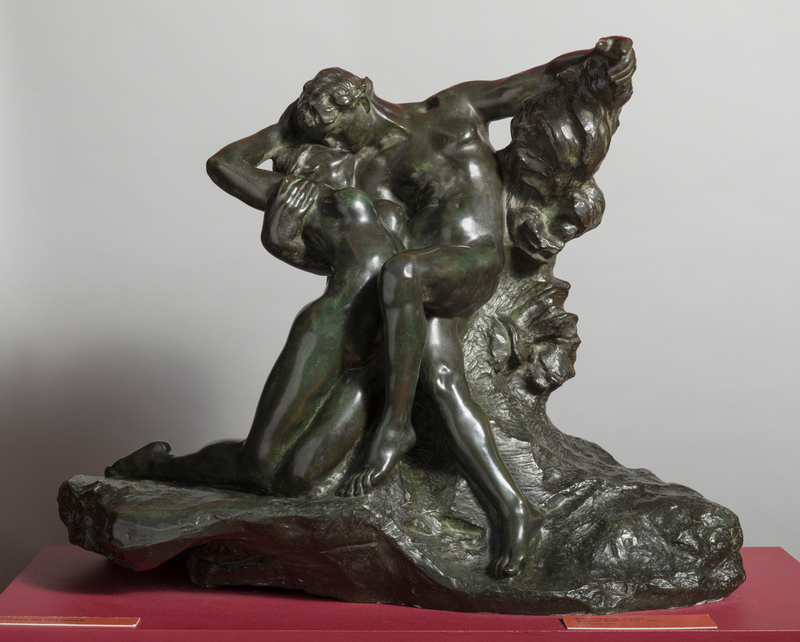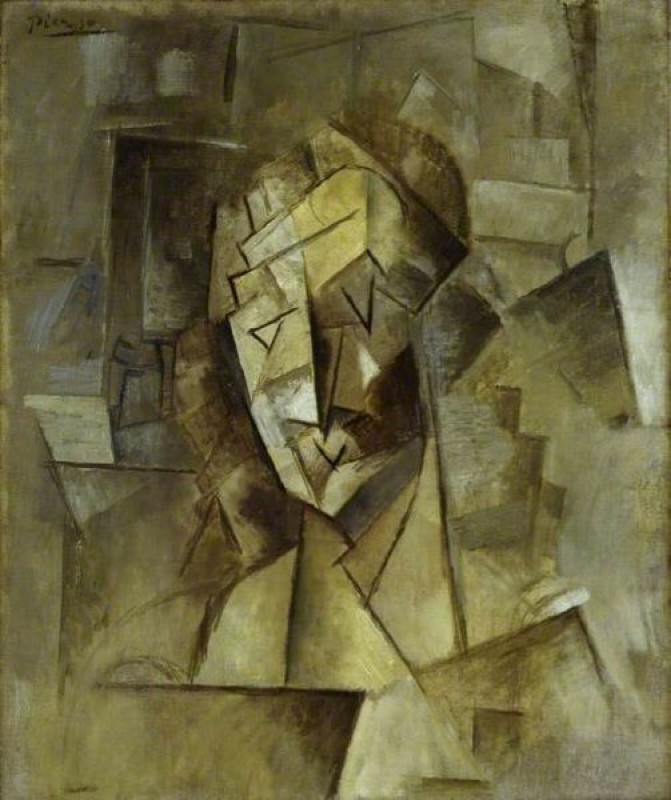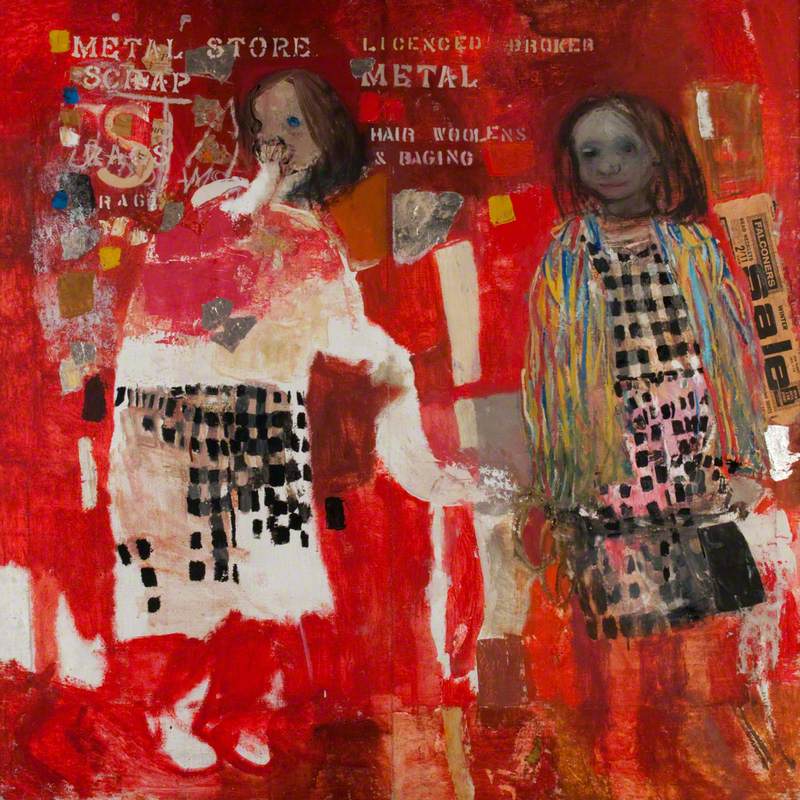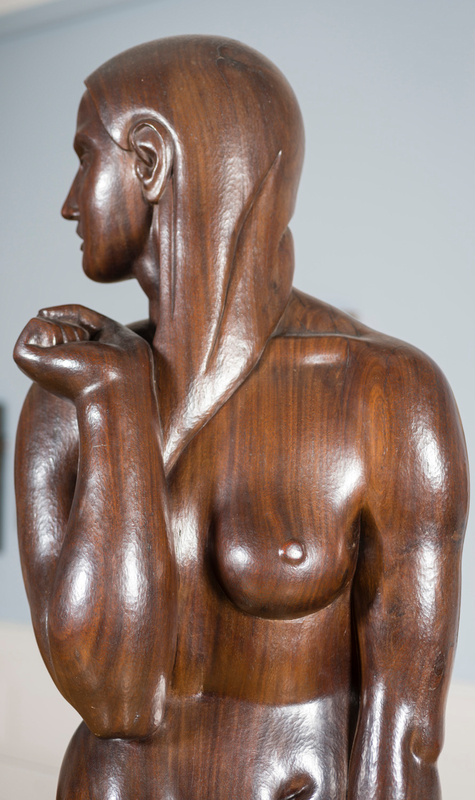Contextual background for teachers
Two Children (1963)
Joan Kathleen Harding Eardley (1921–1963)
Medium: oil and collage on canvas
Dimensions: H 134.7 x W 134.7 cm
The children who played on the streets of Glasgow became popular subject matter for Joan Eardley, whose studio was in Townhead, in the city's East End. Her favourite models, two girls from the neighbouring Samson family, are the focus of this work.
Eardley makes use of collage within this oil painting, adding foil sweet wrappers and scraps of newspaper to the canvas – found items you might expect to encounter on the city streets. Stencilled letters give the impression of a city environment, referencing signs of local businesses such as the 'metal scrap store' near her studio; the red background was inspired by the store's paintwork. This painting was left unfinished on her easel in 1963.
